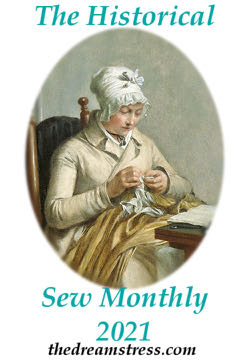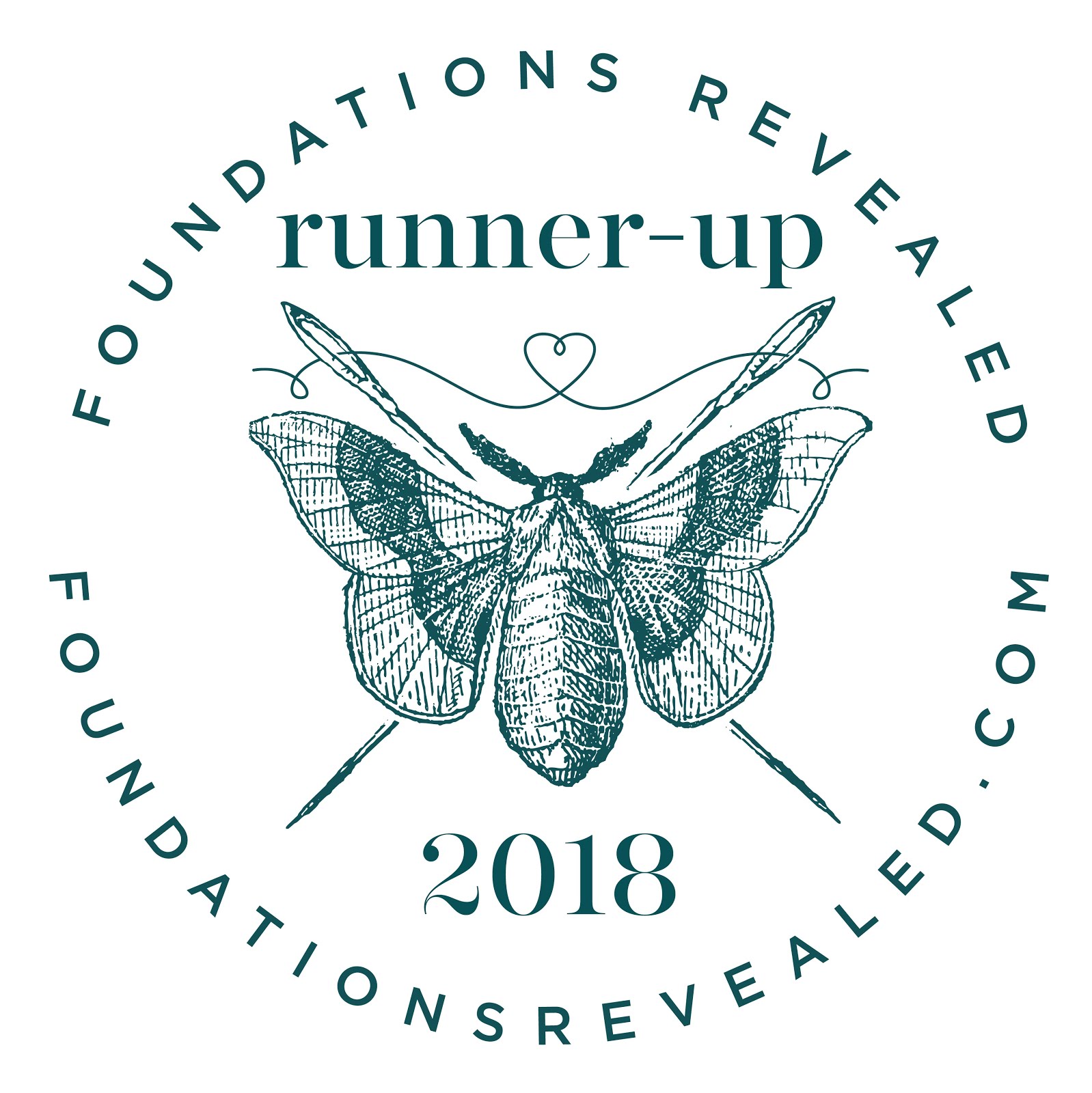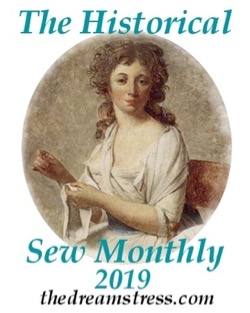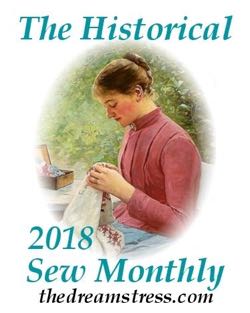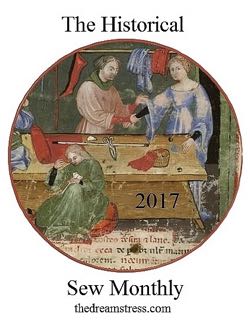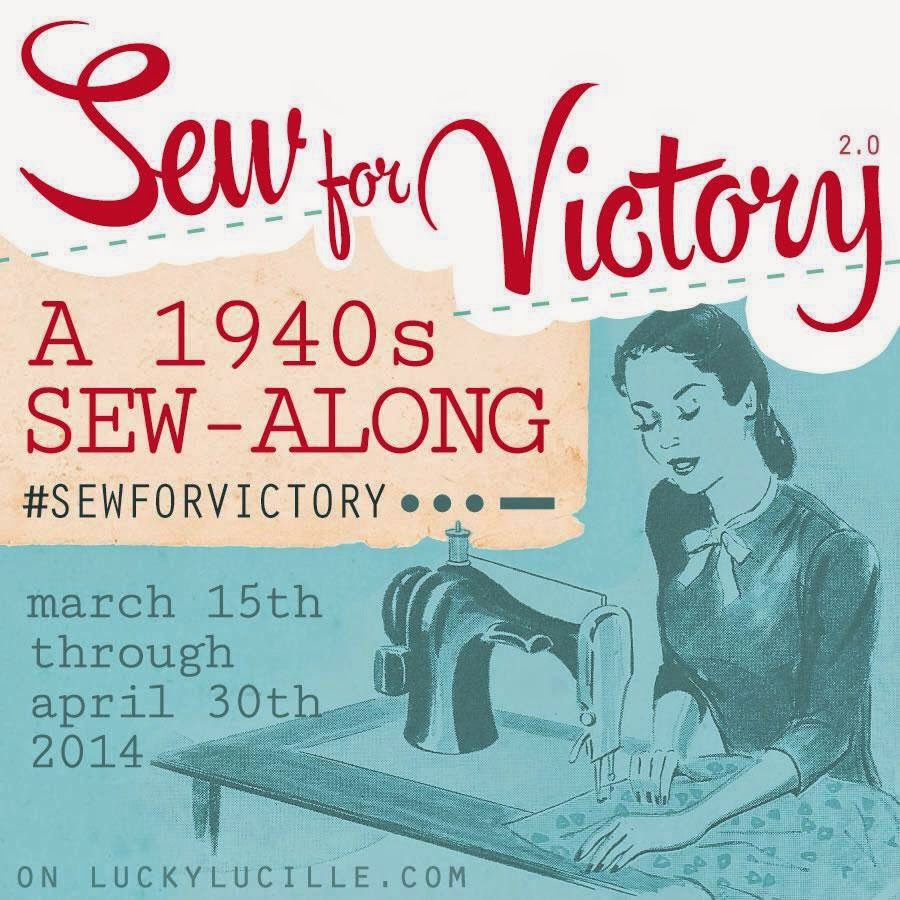YouTube Companion Video: https://youtu.be/dbEDIRdBmJo
Support and shape. Firm and flatten. The foundation garments are so important in creating the fashion silhouette. Following the full corset of the Victorian era, the elongated support of the Edwardian and 19 teens and 1920s period, the girdle was the standard foundation garment until the late 1960s when control top pantyhose became available.
By one definition a girdle is a tight-fitting undergarment which supports and smooths the lower body. Not much different than these garments we have today, over 60 years later, known as shapewear.
Paging through Everyday Fashions of the Thirties as Pictured in Sears Catalogs, Edited by Stella Blum, we find a page titled Corsetry which includes step-ins, pullovers, snug fitting, lightly boned or no boning, and elastic gores. View C on Page 33 reads "Truly Exquisite "Co-ed" side hook girdle. Skilfully fashioned of shimmering Rayon satin with light boning at front only. Six-inch, soft Rayon elastic at sides and four fine supporters. $1.00" About $23.47 today. Still a good value compared to the cost of some shapewear.
In the same book on page 111 are shirts and shorts for another body type which "give that streamline fit, they hug your body lines, s-t-r-e-t-c-h for action, snap back and stay in shape". One style is described as "Wide lastex band in Top takes down stomach bulge..Gives you a new feeling of fitness and a real athlete's figure". Which then required some research into lastex.
Lastex was an elastic yarn invented by the US Rubber Company which entered the market in 1931. It was used for swimwear, brassieres, girdles, and corselettes. It is a rubber core surrounded by wool, rayon, silk, or cotton threads.
Although I have a wonderful vintage Camp corset girdle, I'm hesitant to use it as it's in such beautiful condition and will be nice in a collection.
Making the decision to save the Camp corset girdle means that I will have to make my own. As I search for patterns I find several on Etsy. First a 1930s Long Line Bra and Girdle by RepeatedOriginals.
And a 1930s Corset Garter Belt by Mrs. Depew Patterns.
I purchased both patterns in pdf format and made simple mock-ups. Both looked to have great promise. The Repeated Originals is a single size but has the longline bra pattern. The Mrs. Depew is only the Corset Garter Belt but is multi-sized in 11 sizes ranging from a waist measurement of 25.5" and a hip measurement of 35.5" to a waist measurement of 45.5" and hip measurement of 55.5". Since my blog posts and videos are about sharing patterns that are available and inclusive to as many costumers as possible, I decided to make the Mrs. Depew pattern.
Although I purchased the pattern in pdf format, the pattern is also available on Etsy as a paper pattern. The instructions for printing and assembling are included.
I have used quite a few pdf patterns and have learned that cutting the lower and right edges and then assembling the pattern from the lowest right corner works best for me. I also rough cut a pattern piece when I see it complete so that the remaining pages are easier to position. I only tape the corners and spots where the pattern lines meet and tape as necessary after the pattern is rough cut. I do like the convenience and cost of a pdf pattern and not having to pay for or wait on shipping.
With the pattern ready a mock-up can be made to test fit using a zipper to simulate the busk and zip ties as boning. What about grommets and lacing, you ask? That's the great thing about this design! No lacing! The fit comes with elastic gores and only closes with the busk. Just meant for smoothing and to hold up stockings, but not really meant for reducing.
The supplies are listed in the pattern and with the mock-up complete I order the supplies I need. The pattern calls for spiral boning. I order 2 pieces of 7", 2 pieces of 9.5", and 2 of 11". I will need an 8" busk. My size requires 3/4 yard of coutil. The total for those supplies was $44.20. In addition I need boning tape, twill tape, 3" wide elastic, and 4 garters - all of which were in my stash.
This foundation garment will be in 9 panels shown here from left to right - 2 Front, 2 Side Front, 2 Side, 2 Side Back, and a Back cut on a fold.
The boning and busk and garters will be used like this. The pattern shows 6 garters but I know from experience that one on the front and one further back on the side will be sufficient. Also, I really dislike sitting on a garter. Also, there were only 4 in the stash. So it all works well!
The coutil is folded is half and the fronts cut using the selvedge edges. I've positioned the Side Front, Side, and Side Back with the boning channel on the lengthwise grain. The back panel is cut on the fold.
Markings are transferred to the coutil with a heat erasable pen and pins mark the front side of the coutil. As instructed, all seam allowances are stay stitched at the seam line which is 3/8" as marked on the pattern.
The pattern supplier does warn that "this is an imperfect, working translation of the original instructions. We highly recommend that you sew a test muslin of the corset to perfect fit and construction". While the fit was beautiful, the instructions did confuse me in several places but I made notes to myself and made what I felt were good decisions based on my own corset-making experience.
Here you can see where panels are folded at the seam line and placed on top of other panels matching the seam lines. When stitched from the top, this will mean that each line of stitching is through 3 layers.
To avoid backstitching at the beginning and end of the stitch line or to hide the join if you run out of thread during a stitch line, I draw the outside thread inside and tie off the two threads. It's easiest for me to thread the outside thread through a needle and then push the needle with thread to the inside. Makes for a very clean finish on the outside, I think.
The right side panels and center back panel are sewn but not yet pressed.
And the left side panels sewn together and to the center back and pressed. Notice the shape that is already built into the foundation.
The elastic gores can now be added. The seam allowances are clipped and turned to the inside. The elastic cut and sewn into the back side of the gore with a topstitch similar to that used on the panels.
In corset-making I usually insert the busk first before the front panels are sewn to other panels.
The instructions called for the busk to be inserted at this point, which was a good procedure as the elastic gores needed some movement when pivoting around the opening which was easy without the stiff busk inserted. So I followed those instructions but I did add a 1/8" reinforcing stitch line on each edge of the center fronts as I usually do with corsets. The front edge has been folded in as shown on the pattern. The busk consists of two parts: the part with the studs which are placed with the studs closest to the corset edge, and the a part with loops. I marked where the top stud should be placed following the pattern and as my busk had one less stud than the pattern indicated, marked where my studs would come through the coutil.
The fibers of the coutil are easily pushed aside with a tapered tailor's awl and a stud inserted in the opening from the wrong side. The coutil fibers tighten themselves around the stud.
The instructions were to cut the coutil to hold the loops. Again, I sewed a 1/8" stitch line along the edge leaving openings for the loops. The opening is cut open and the loops inserted. With both sides of the busk inserted, a stitch is made along the side of he busk knob side and loop side using a zipper foot. This will hold the knob and loop metal plates in place in the coutil.
With the elastic gores and busk complete, the boning channels are sewn in as marked on the pattern. The boning tape is sewn on each edge and my 3/4" wide tape can accommodate two 1/4" bones with a stitchline sewn down the center and on each edge, or for this use with my 1/2" spiral bones just sewn down each edge.
Spiral boning is different than other boning is that it is very flexible in four directions - side to side, and back to front. I've used it to bone ballgown bodices where structure is needed but flexibility is important. It will be interesting to see how this foundation acts when worn and I'll let you know.
The boning channels are sewn and the corset garter belt is ready for the boning.
Although the boning channels are sewn from the top to the elastic on the front, and top to bottom on the other panels, the bones do not extend that far. This is similar to Victorian and Edwardian corsets. To keep the bones in place for now I've used pins.
To keep the bones in place permanently I'll use corset flossing. This is an embroidery technique which surrounds the end of the bone and also protects the corset fabric from wear from the bone. I have the white twill tape to cover the edges of the corset garter belt and I have white embroidery floss. I also have some narrow cotton bias tape and embroidery floss in an ivory color. Choices!
In the end I stayed with the pattern instructions and used the white twill tape. I removed the bones and since they will be inserted from the upper edge, I first enclosed the lower edge. Folded in half, pinned, and sewn by hand with short running stitches.
Now the steel spiral bones are placed in the boning channels and the upper edge is encased in the twill tape.
Corset flossing is such a beautiful art and there are unique and colorful patterns available in tutorials all over the internet.
I've used this embroidery technique and saved the diagram. I'll share it here for you and can only thank the person who originally shared it for my use as I found it on the internet. Whoever you are, Thank you very much!
I sewed thread guidelines to keep my lines straight on top and bottom and followed stitch holes on the sides. Then the thread guidelines are removed.
Twill tape loops are sewn to the lower edge just above the twill tape edging and the garters are attached.
The 1930s Corset Garter Belt is finished! I'll share photos with you and there is some additional video on the YouTube Companion Video.
Originally this was to be a Part 3 of my 1930s Underthings for my 1930s Wardrobe but I felt that this deserved it's own post and video as it's such a versatile foundation for so many eras and easy to make. I hope this helps you on your own journey! So we'll call this Part 3a. Part 3b coming soon!
On the dressform with the 1930s black rayon bra and tap pants.
Hugs,
Jeanette
Historically Sew Monthly - November 2023 - Style Starts at Home
The Challenge: Make something which would generally be seen only within the household (ex: informal at-home wear, nightwear, undergarments).
What the item is: Corset Garter Belt
How it fits the Challenge: An undergarment to create the silhouette and hold stockings.
Material: Coutil
Pattern: Mrs Depew 1930s Corset Garter Belt
Year: 1930s
Notions: Busk, spiral metal boning, elastic, twill tape, garters, embroidery floss
How historically accurate is it? Pattern, materials, and techniques all accurate.
Hours to complete: 8 hours
First worn: 1930s evening on the Queen Mary 2
Total cost: $55
.jpg)





















.png)
.png)







.jpg)

























.jpg)









.jpg)






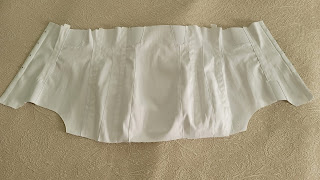














.jpg)




















